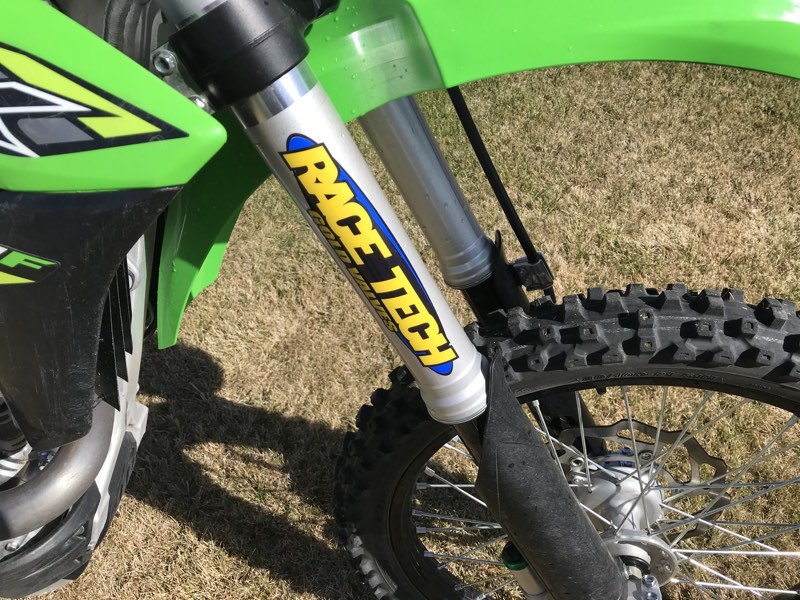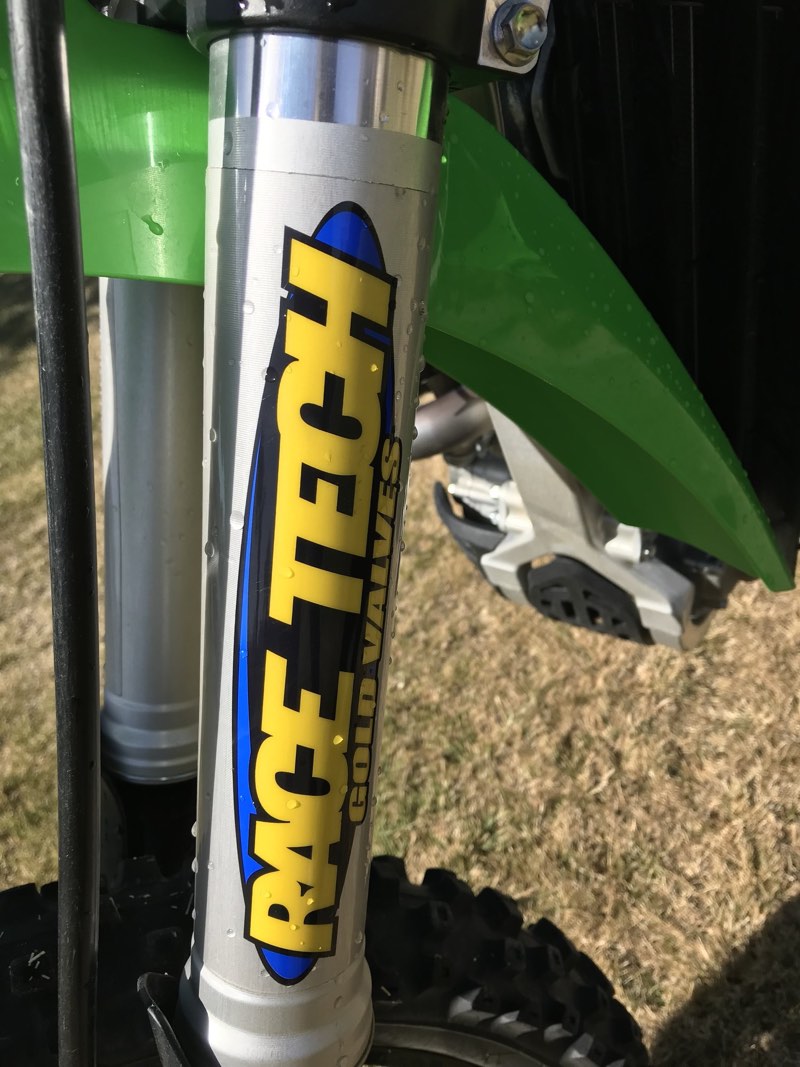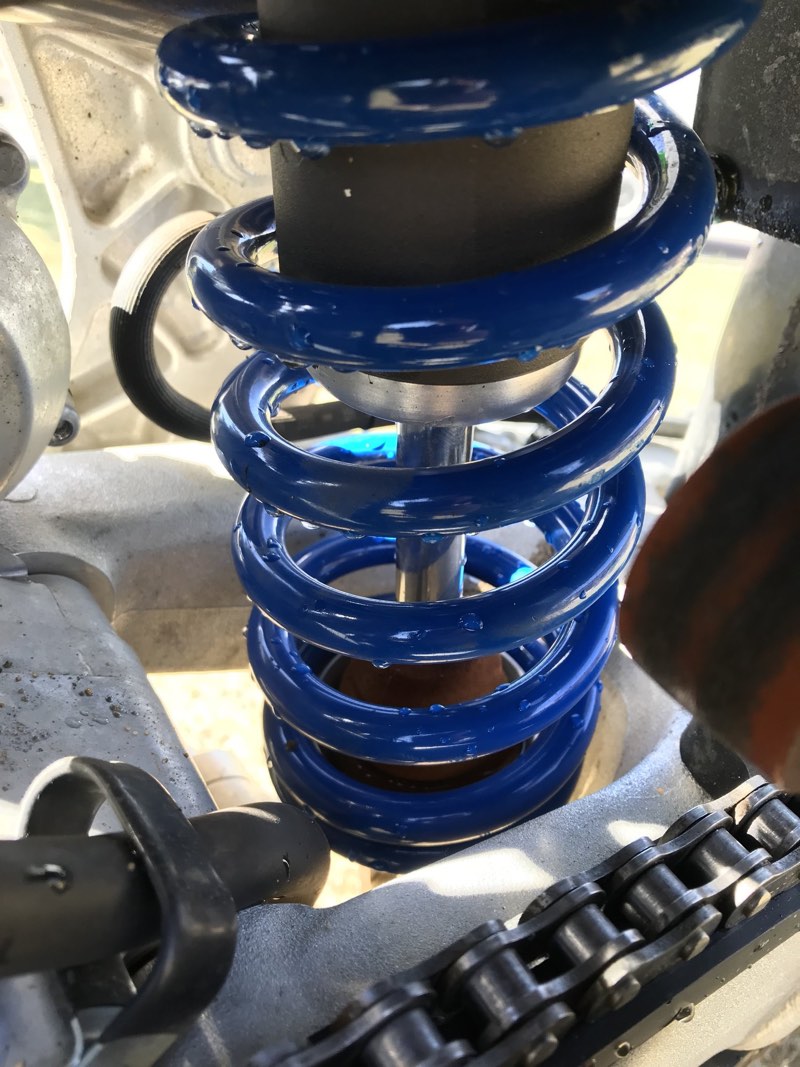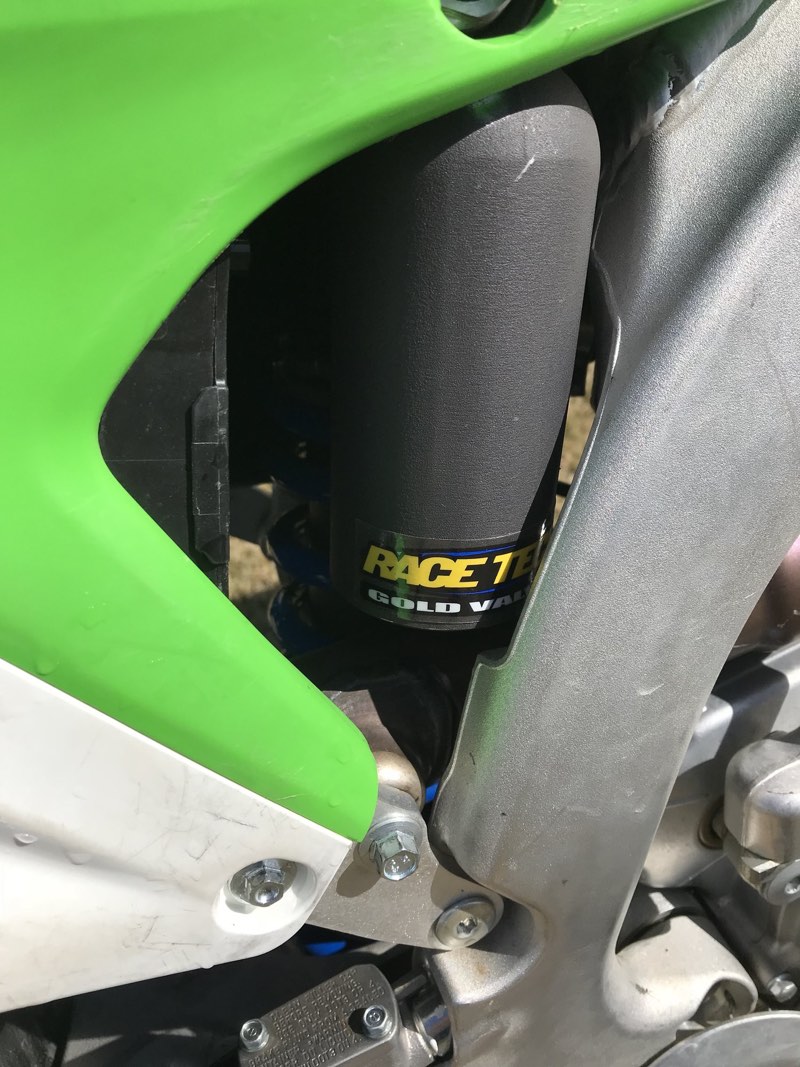Share This Article
The 2018 Kawasaki KX450F has a lot of potential to be a great machine, but the Showa SFF-Air TAC fork holds this machine back some. In stock trim the fork can be somewhat difficult to set up and get a comfortable setting. When you soften it up to get comfort, it bottoms and rides too low in the stroke. When you stiffen it up to add hold up, it becomes harsh on square edge and small acceleration chop. If I had a Kawasaki, I would put a spring conversion in it immediately, but I understand that everyone is not like me and will go to a spring fork or a spring conversion kit. I wanted to see if we could make this seem of suspension better on the KX450F, so I handed the fork and shock off to Race Tech, to see if they could get my non air fork having ass somewhat happy and comfortable on the SFF-Air TAC.

First off let me give you a brief explanation of the SFF-Air TAC fork. SFF means Separate Function Fork because each fork leg performs a separate function. The left leg contains the damping cartridge and the right fork leg contains the pneumatic air spring. TAC means Triple Air Chamber. The right fork leg houses three pneumatic air chambers to tune the air spring side of the fork. The advantages that Kawasaki and Showa seen when developing this fork was the adjustability, weight, and minimal effect on total pressure, if the fork leg and seal are damaged. The air spring allows riders of different sizes to be able to set up their bikes at the track without any disassembly or costly fork springs. Additionally, air pressure can be altered quickly when track conditions change with mud, hard pack, rocks and loamy soil. The Showa SFF-Air TAC fork weighs just over two pounds less than Showa’s current spring fork that currently comes on the Honda’s. All sounds good on paper right? Well, when this fork was introduced it quickly became apparent that it wasn’t as good on the track as Showa made it sound.
Once Race Tech did their work, I installed the suspension back on the bike and was off testing. I went to more than a few types of tracks to really dissect if this Race Tech stuff was better than the stock suspension. I went as far as getting another stock 2018 Kawasaki KX450F to ride back to back with the Race Tech suspended set. The first thing I noticed was that the fork didn’t have that sticky feel to it on the top of the fork’s stroke. When accelerating out of corners with the stock suspension the fork always seemed to be hard and deflect, but with the Race Tech fork it moved more freely in the stroke and gave me increased front end feel. Mid stroke comfort was still hard to find however and that proved to be my toughest challenge over the course of this test. I played with the inner and balance air pressures a lot before I came up with a setting that I was good with. I did notice with the Race Tech fork that the movement of the fork over square edge and braking bumps was plusher than the standard fork. Basically in Layman’s terms; you feel less of the track up front. Bottoming resistance was still great and when I did decide to soften the fork up a little (to get some added compliance in hard pack conditions) it didn’t blow through. With the Race Tech valving I felt like each adjustment I made (in air pressure) didn’t negatively affect another area (of the fork’s action) too much. To me the biggest difference between the Race Tech fork and the stock fork is “entrance of corners”. I could come into corners harder without the fork diving or getting to low in the stroke and it kept better front tire contact to the ground than the stock fork. Does this mean I feel like this Race Tech SFF-Air TAC fork is better than a spring fork now? No, it doesn’t, but at least now I can get more consistency with the front end of this Kawasaki. Spring forks still add another level of comfort and consistency through rough conditions that this Showa air fork can’t (even with the Race Tech Gold Valves). The question I will now get asked is…. Is this fork now good enough that I could live with it on my bike? My answer to you is “yes”! Unless you’re riding very rough, dry hard pack conditions (or long off-road races) the Race Tech fork is worth the price of admission.

Going into this test I wasn’t thinking that there would be that much difference in feeling on the track between the stock shock and the Race Tech shock, but I was wrong. I experienced with shock sag settings and always came back to 106 mm as that is what made the Kawasaki feel the most balanced. The most noticeable improvement that I felt was rear wheel traction (especially on acceleration). Coming out of choppy corners (with the Race Tech shock) the rear end of the Kawasaki felt more planted, stuck to the ground better and gave me more forward bite. De-cel comfort (or braking bumps) feel was also improved as the rear wheel stayed on the ground better and gave me more of a planted feel. With the stock shock the Kawasaki rear end stayed straight, but sometimes would have a noticeable kick when hitting the first big braking bump coming into a corner (which sometimes would un-settle the chassis). The Race Tech shock soaked up the first few de-cel bumps before it would want to react and when it did react, it was more of a dead feel on de-cel. The only complaint I had was that it was maybe a little too soft on g-outs or sharp transitions (high-speed compression). I stiffened the high speed up a little and that helped some, but I think I would want to try and go a touch stiffer internally with the valving.

At the end of this test I was happy to figure out that there is some hope for riders that want to keep their Showa SFF-Air TAC fork and maybe don’t want to necessarily go to a spring conversion kit. Like I said in the 2018 450 MX Shootout, “I feel like the green machine has the best overall frame feel and just needed some suspension help”. Race Tech did a great job with providing some added comfort to the 2018 Kawasaki KX450F. Below is my best suspension setting with the Race Tech valved suspension. If you have any questions about this test please feel free to email me at kris@keeferinctesting.com and I can try to help as much as I can.

Fork:
Inner: 155 psi.
Outer: 16 psi
Balance: 170-172 psi
Fork Height: 5mm
Compression: 8 out
Rebound: 10 out
Shock:
Sag: 106 mm
Low Speed Compression: 8 out
High Speed Compression: 2 out
Rebound: 11 out
